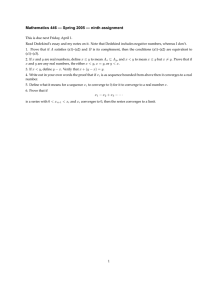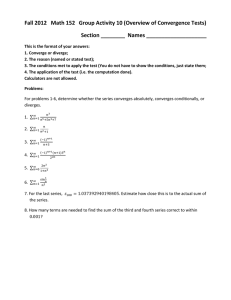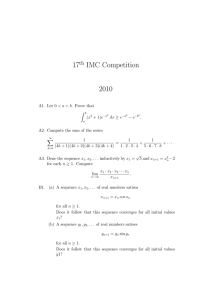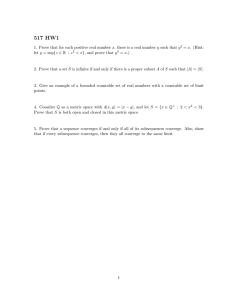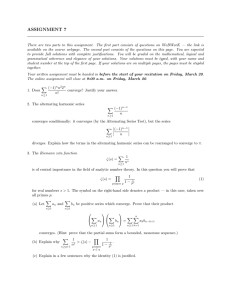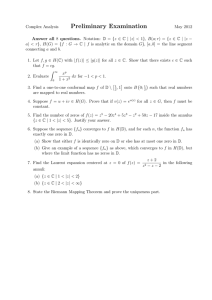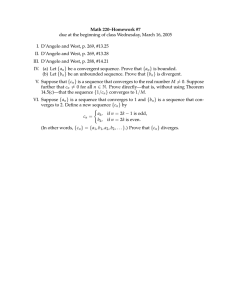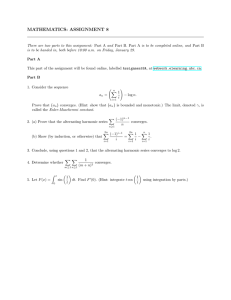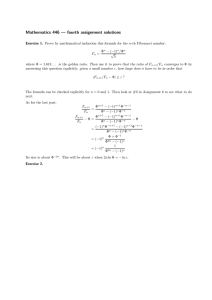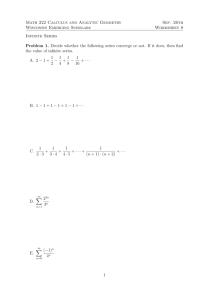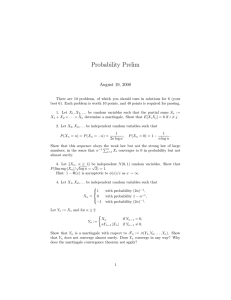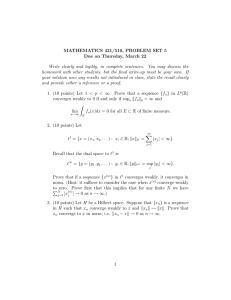Mathematics 446 — Fall 2005 — sixth assignment
advertisement
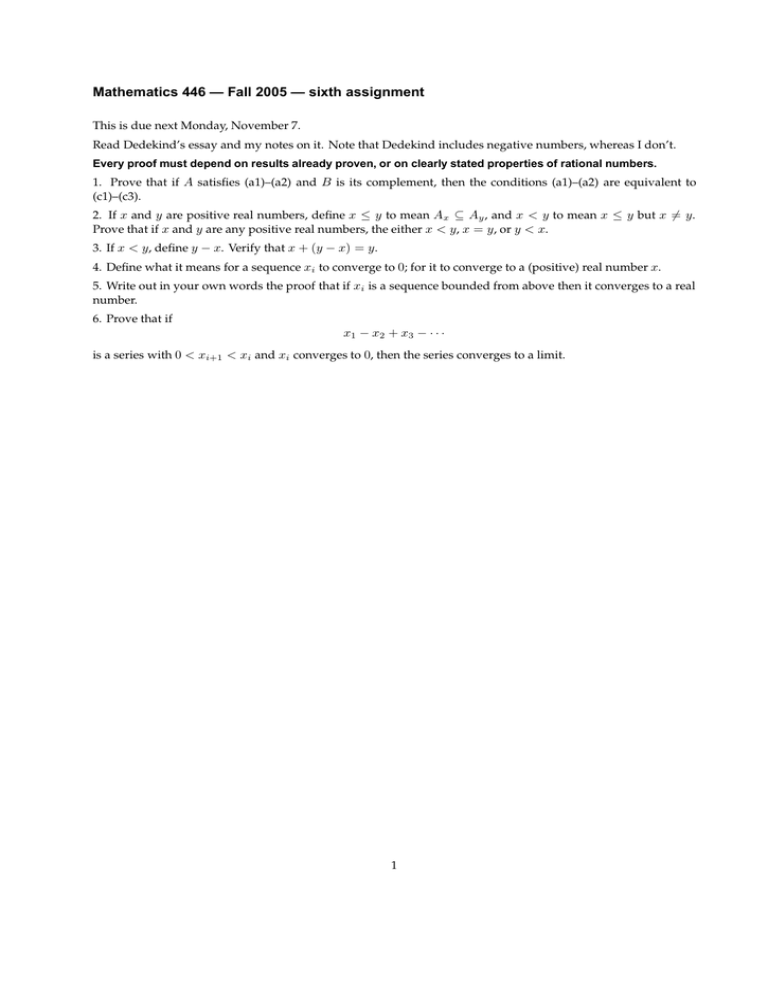
Mathematics 446 — Fall 2005 — sixth assignment This is due next Monday, November 7. Read Dedekind’s essay and my notes on it. Note that Dedekind includes negative numbers, whereas I don’t. Every proof must depend on results already proven, or on clearly stated properties of rational numbers. 1. Prove that if A satisfies (a1)–(a2) and B is its complement, then the conditions (a1)–(a2) are equivalent to (c1)–(c3). 2. If x and y are positive real numbers, define x ≤ y to mean Ax ⊆ Ay , and x < y to mean x ≤ y but x 6= y . Prove that if x and y are any positive real numbers, the either x < y , x = y , or y < x. 3. If x < y , define y − x. Verify that x + (y − x) = y . 4. Define what it means for a sequence xi to converge to 0; for it to converge to a (positive) real number x. 5. Write out in your own words the proof that if xi is a sequence bounded from above then it converges to a real number. 6. Prove that if x1 − x2 + x3 − · · · is a series with 0 < xi+1 < xi and xi converges to 0, then the series converges to a limit. 1
